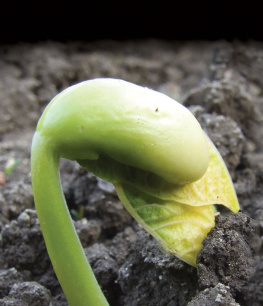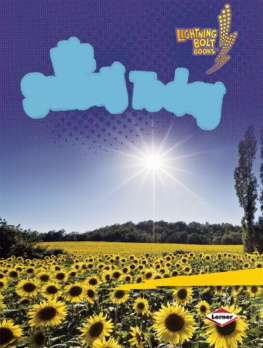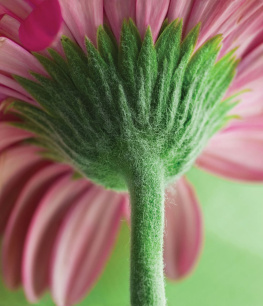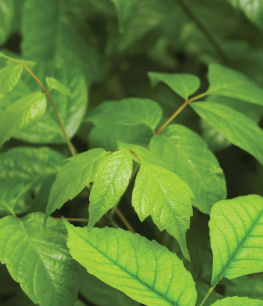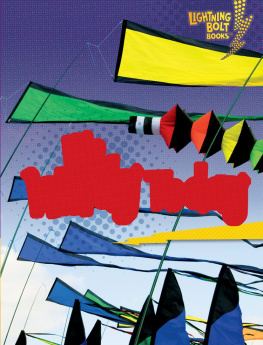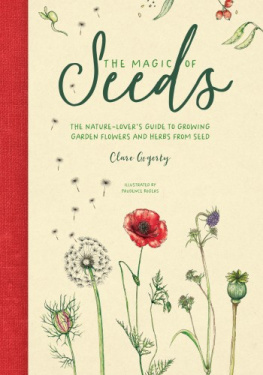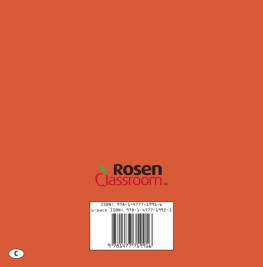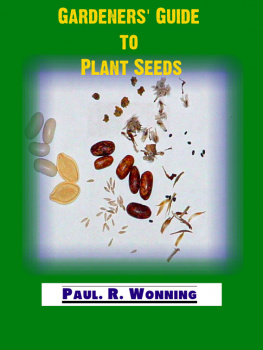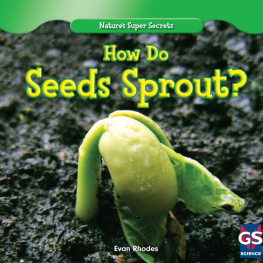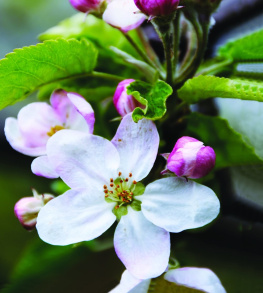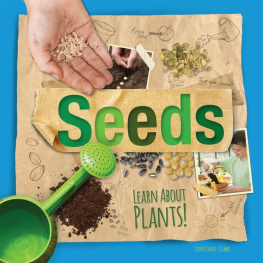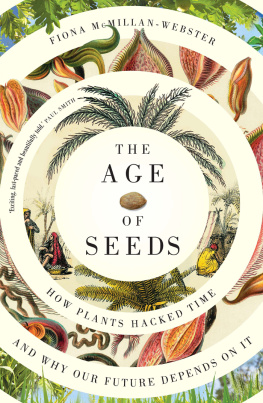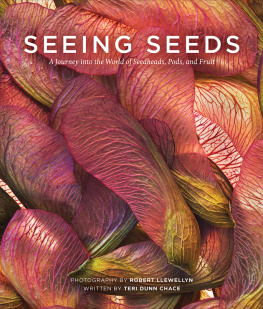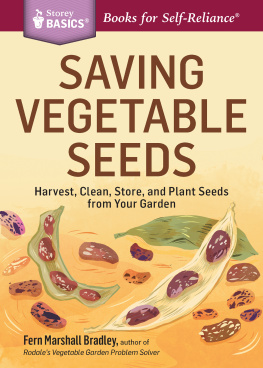Exploring
Seeds
by Kristin Sterling
I see seeds.
Parts of a
Plant
flower bud
stem
leaves
seedling
seed
roots
soil
Seeds are parts of plants.
Each seed can become a
new plant.
Seeds need water and soil
to grow.
Seeds crack open in the
ground. They send roots
down into the soil.
Stems from the seeds go up
into the sunlight.
Soon leaves and flowers
grow.
Foods we eat form around
the flowers and the leaves.
People plant seeds on farms
and in gardens.
Seeds are also blown by
wind and moved by water.
Seeds grow in pinecones.
Plums have large seeds
inside called pits.
People can eat seeds!
Sunflower seeds are good
snacks.
You can eat the yellow
seeds of a corn plant.
Seeds are on your plate, in
the ground, and all around
you.
Do you see seeds?
How Seeds Move
Seeds move in many ways.
The seeds of coconuts float
on water. The seeds of
maple trees have wings.
Wind spreads these seeds.
Burrs are seed holders. They
stick to animal fur. When the
animal travels, so do the burrs.
Chestnuts can travel this way.
Nuts and berries are eaten by
animals. The seeds are left
behind in animal droppings.
coconut swimmers
maple tree fliers
chestnut stickers
nut treats
Seed Facts
Poppy seeds are used in
muffins. They are small, tasty
seeds.
Many people roast pumpkin
seeds and eat them in the fall.
Strawberries have seeds on the
outside of the fruit.
The outer layer of a seed is
called a seed coat. Seed
coats can be thin or thick.
Some seeds are not safe to eat. The seeds of a lily - of - the valley plant can change how fast your heart beats.
Some seeds stay in the ground for a long time. They need the right amount of water, warmth, and sunlight to sprout. Scientists found a seed that sprouted after 2,000 years!
Glossary
roots the parts of a plant that
bring in water and keep a
plant in the ground
seeds the plant parts that
can make new plants
soil the dirt in which plants
grow
stem the part of a plant that
holds up the plant
Index
flower
leaves
pits
roots
soil
stem
water
Copyright 2012 by Lerner Publishing Group, Inc.
All rights reserved. International copyright secured. No part of this book may be reproduced,
stored in a retrieval system, or transmitted in any form or by any meanselectronic, mechanical,
photocopying, recording, or otherwisewithout the prior written permission of Lerner Publishing
Group, Inc., except for the inclusion of brief quotations in an acknowledged review.
The images in this book are used with the permission of: Rachel Weill/FoodPix/Getty Images,
pp. 2, 22 (2nd from top); Laura Westlund/Independent Picture Service, p. 3; John Lund/
Digital Vision/Getty Images, p. 4; Will Heap/Getty Images, pp. 5, 22 (3rd from top); Nigel
Cattlin/Visuals Unlimited, Inc., pp. 6, 22 (1st from top); Bogdan Wankowicz/Dreamstime.
com, pp. 7, 22 (bottom); Weir2010/Dreamstime.com, p. 8; Aleksandar Zoric/Dreamstime.
com, p. 9; Alistair Berg/Getty Images, p. 10; blickwinkel/Alamy, p. 11; Brent Hathaway/
Dreamstime.com, p. 12; Michael Rosenfeld/Photographers Choice/Getty Images, p. 13;
Andersen Ross/Digital Vision/Getty Images, p. 14; JGI/Jamie Grill/Belnd Images/Getty
Images, p. 15; Noam Armonn/Dreamstime.com, p. 16; Ryan Beiler/Dreamstime.com, p. 17;

